
Steve's Model Railway Site

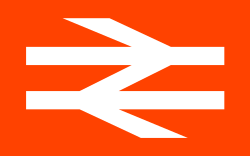

British Rail Mainline Locomotives
TOPS numbering under British Rail
Total Operations Processing System is the computer system used by British Rail for managing their locomotives and rolling stock they own or operate on the rail system.A five- or six-digit TOPS number is divided into two parts.
The first two or three digits were used to denote the class of locomotive or multiple unit. The numbers were often written in two space separated groups, such as "47 401" to highlight that division. Sub-classifications were indicated in the TOPS system with a slash and a subclass number, e.g. "47/4".
Locomotives are assigned classes 01–98
diesel locomotives 01–79 (originally 01–69).AC electric locomotives 80–96.
departmental locos (those not in revenue-earning use) 97.
Steam locomotives 98.
DC electric locomotives were originally allocated classes 70–79 but this was modified in 2011 (see British Rail locomotive and multiple unit numbering and classification); the sole relic of this is Class 73 which continues unrenumbered, probably because it can be considered equally a diesel locomotive as it is a DC electric.
British Rail's shipping fleet is in the system as Class 99.
Diesel multiple units (DMUs):-
With mechanical or hydraulic transmission 100–199.DMU's with electric transmission 200–299.
Electric multiple units (EMUs):-
300–399 are overhead AC units (including AC/DC dual-voltage units.Southern Region DC third rail EMUs are 400–499.
Other DC EMUs 500–599.
700 Series
Electric multiple units from the Siemens Desiro family, Stadler FLIRT modular train family and Bombardier EMU's have been given the 700 series.800 Series
Hitachi A-train family have been given the 800 series eg Azuma.900 Series
Selected numbers in the 900 series have been used for departmental multiple units, mostly converted from former passenger units.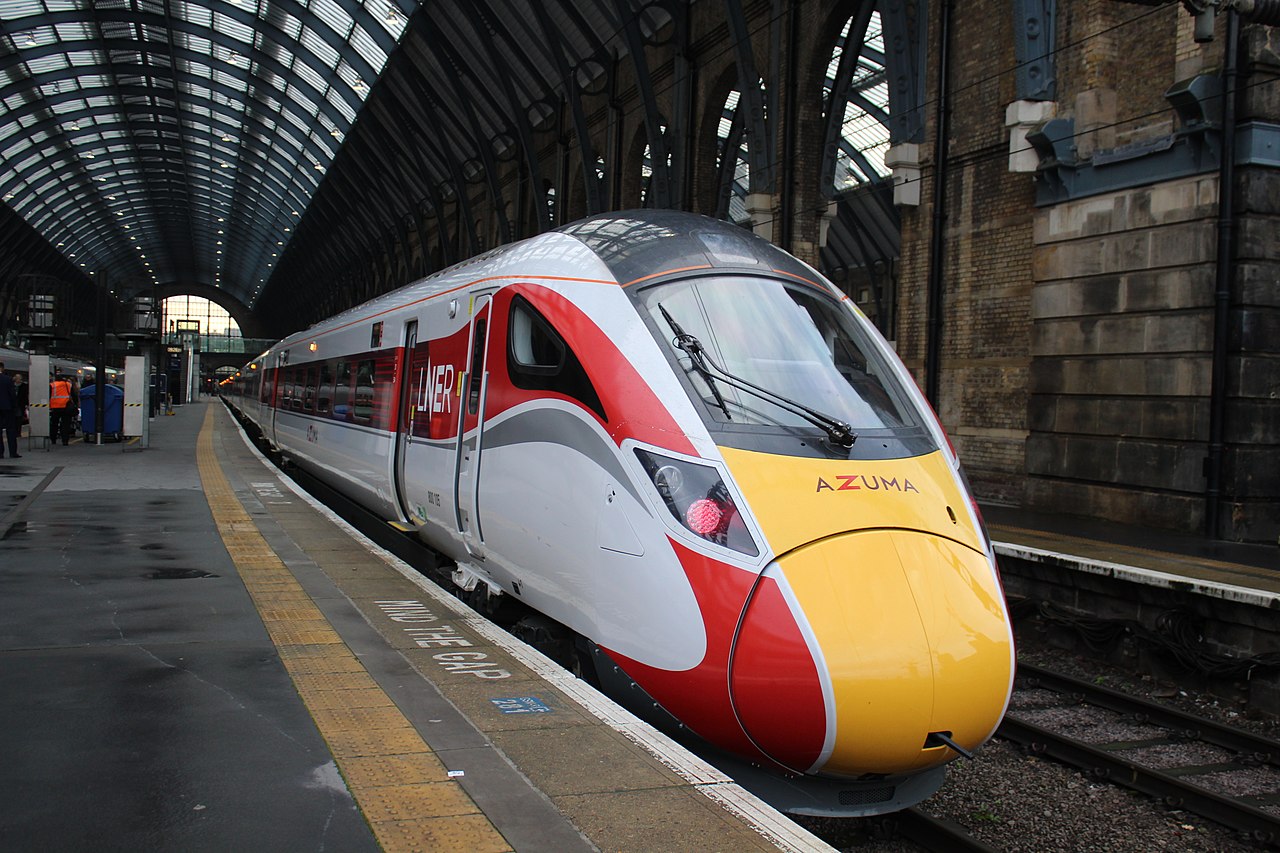
Class 800 AT300 Azuma
The British Rail Class 800 AT300 is a type of bi-mode multiple unit train built by Hitachi for Great Western Railway and London North Eastern Railway. They use electric motors for traction but in addition to operating on track with overhead electric wires they have diesel generators to enable them to operate on unelectrified track.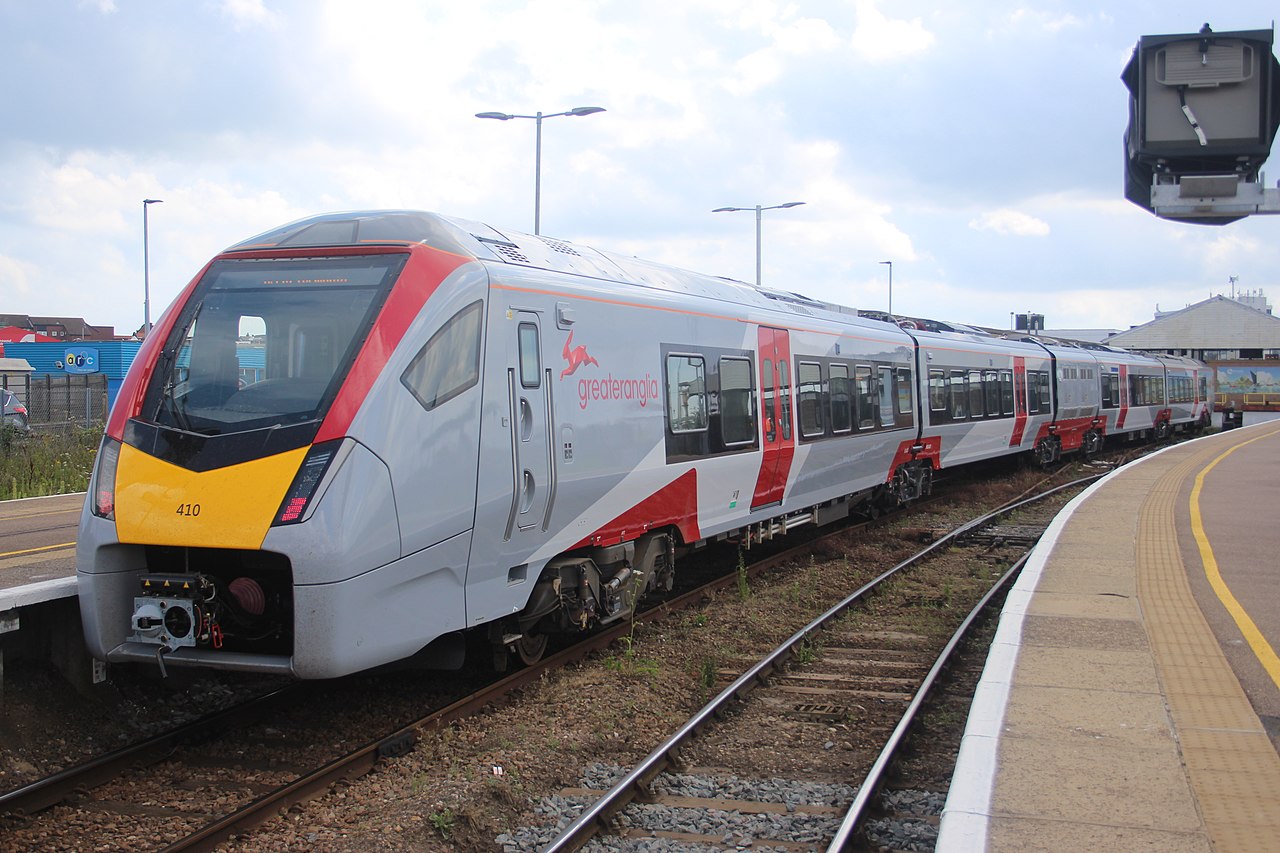
Class 755 bi-mode multiple unit
The British Rail Class 755 is a class of bi-mode multiple unit train built by Stadler Rail for Greater Anglia. Part of the FLIRT modular train family, the trains first entered service on 29 July 2019 and are used on regional and local services throughout East Anglia.Gt Yarmouth Class 755
Canada
On 3 May 2018 it was announced that the city of Ottawa would be purchasing 7 diesel-electric FLIRT trains to use on its upgraded and extended Trillium Line.[4] The trains are expected to enter service in 2022.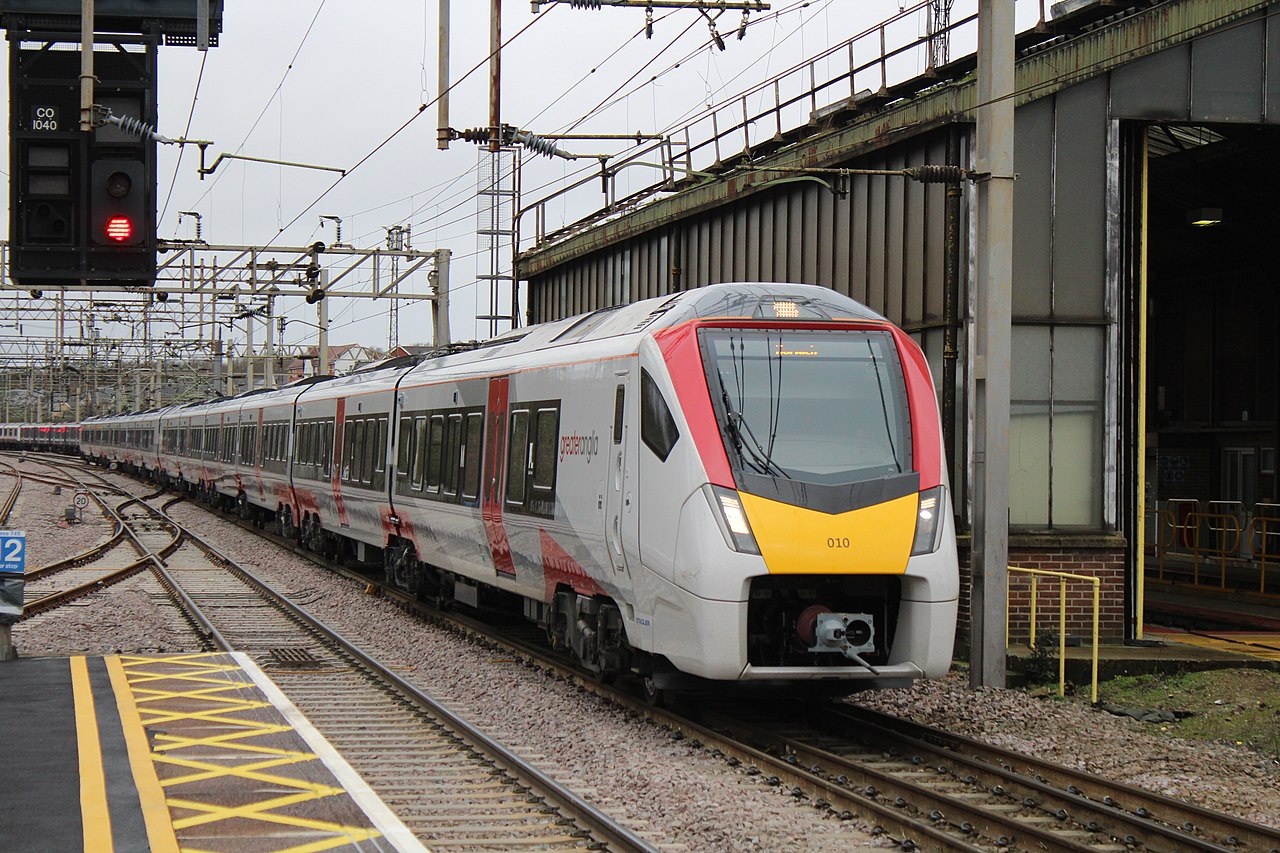
Class 745 EMU
The British Rail Class 745 is a class of electric multiple unit train, built by Stadler (Switzerland) as part of the FLIRT family. The class is built for Greater Anglia for use on their inter-city services and the Stansted Express services. They first entered service on 8 January 2020, after being constructed between 2018 and 2020 in Switzerland.London to Norwich Class 745
Greater Anglia are using Class 755's composed of Stadler Rail 38 bi-mode multiple units, 14 three-car 755/3 sets and 24 four-car 755/4 sets with intention to replace the ageing diesel Class 153, 156 and 170 Sprinter, SuperSprinter and TurboStar fleets.
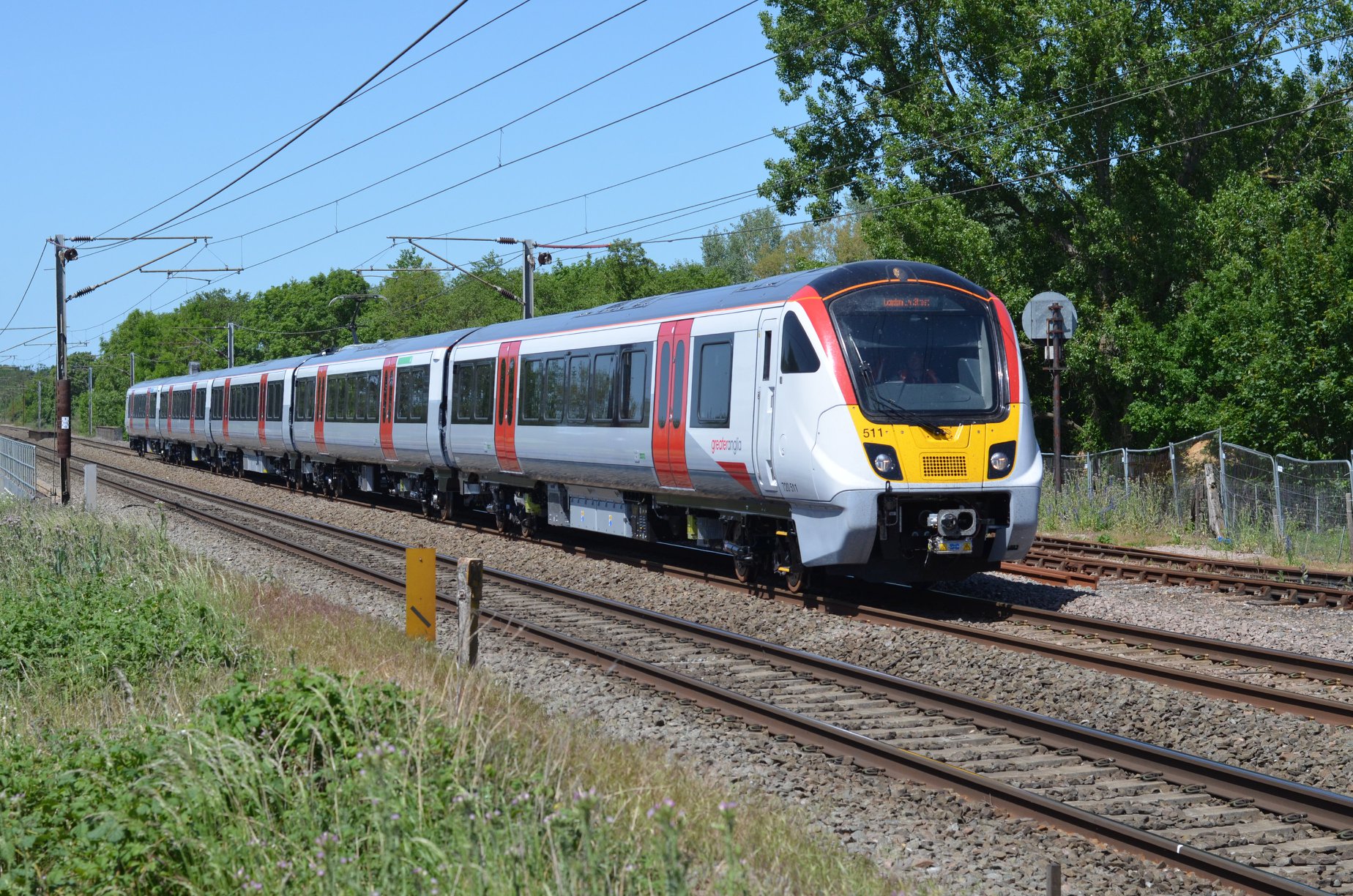
Class 720 EMU
The British Rail Class 720 is a class of electric multiple units built by Bombardier at Derby Litchurch Lane Works for Greater Anglia. They will be operated on suburban lines out of London Liverpool Street and London Fenchurch Street. All 111 of the Greater Anglia units are expected to be introduced from 2020.Replacing the 321 series trains all 720 trains have 5 carriages with 544 seats, full AC and are the only trains in the UK with under-floor heating.
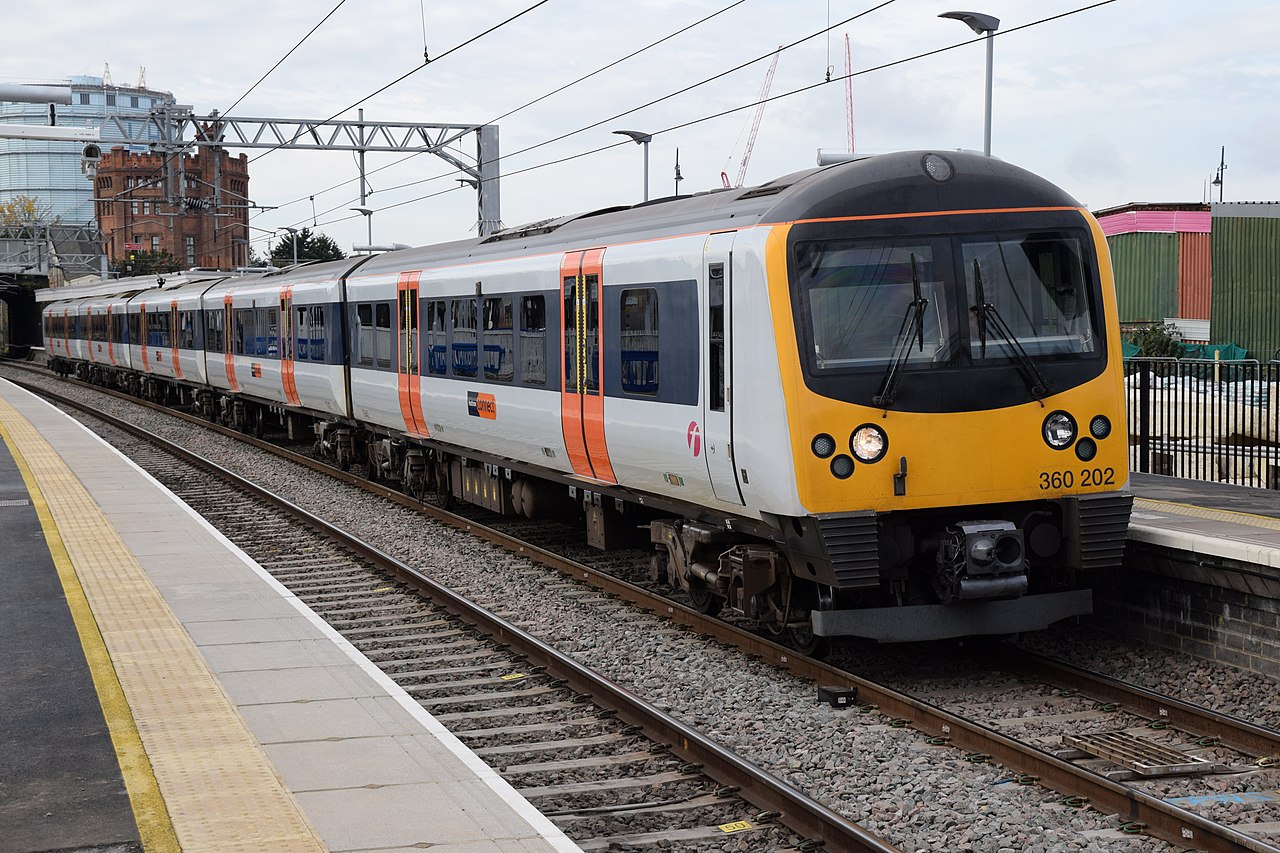
Class 360
The British Rail Class 360 is an electric multiple-unit class that was built by Siemens between 2002 and 2005. Part of the Siemens Desiro family, they are currently operated by Greater Anglia and TfL Rail.They are primarily used on Great Eastern Main Line services from London Liverpool Street to Clacton-on-Sea, Colchester Town and Ipswich. They also run to Walton-on-the-Naze and the Mayflower line. They have on occasions operated through to Norwich.
London to Colchester Class 360
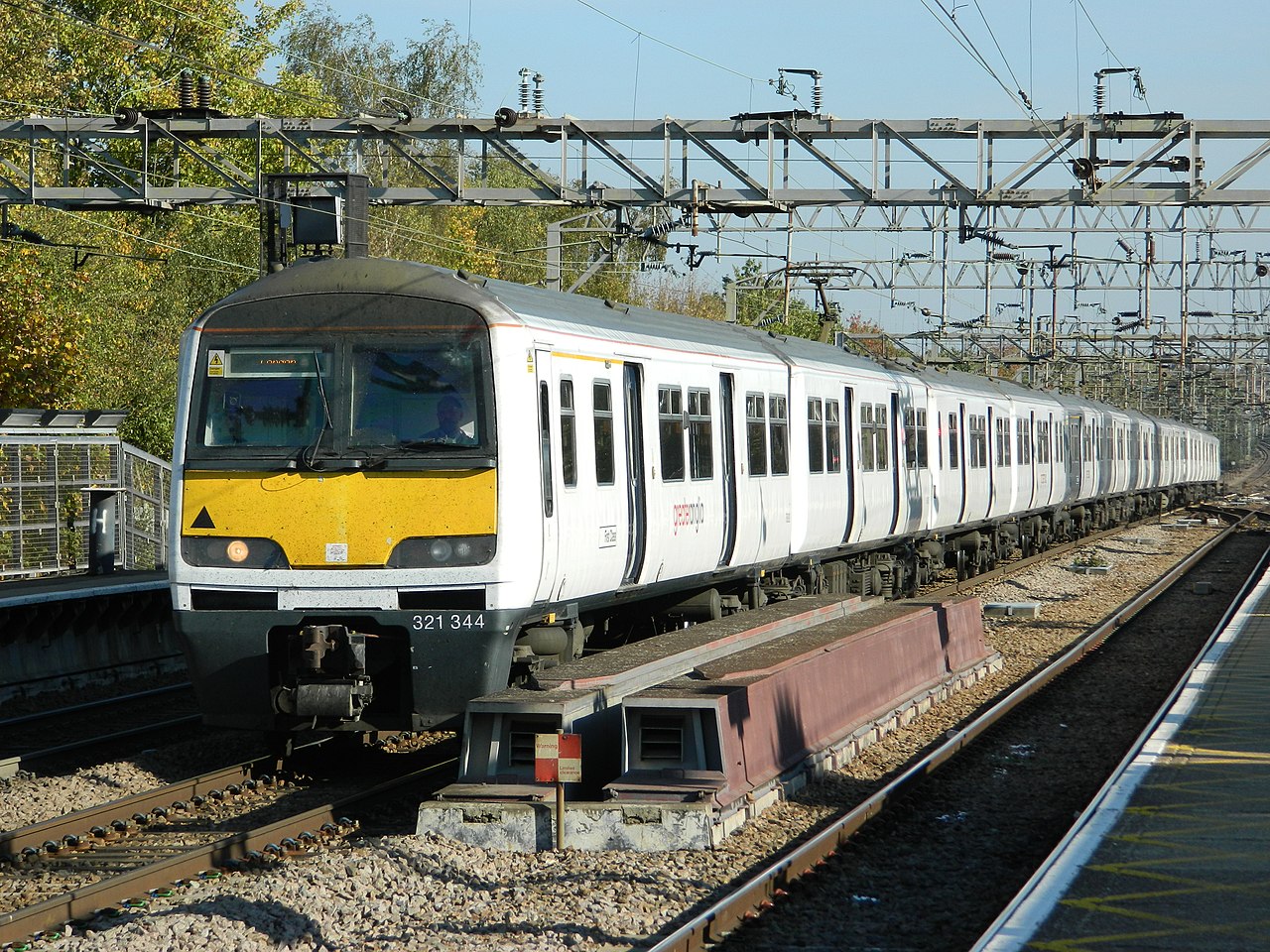
Class 321
The British Rail Class 321 alternating current (AC) electric multiple units (EMU) were built by British Rail Engineering Limited's York Works in three batches between 1988 and 1991.[1][2] The design was successful and led to the development of the similar Class 320 and Class 322.Today the class is operated by Greater Anglia.
These units replaced slam-door Class 305, Class 307, Class 308 and Class 309 units on trains to Clacton and Southend-on-Sea, and worked services on the newly electrified routes to Ipswich and Harwich. They also displaced many Class 312 slam-door units, which moved over to the London, Tilbury and Southend Railway. Some of the Class 309s were retained until 1994, and 24 of the newer Class 312 units were retained long-term to work services to Walton-on-the-Naze and peak services to Clacton, Ipswich and Witham.
London to Norwich Class 321
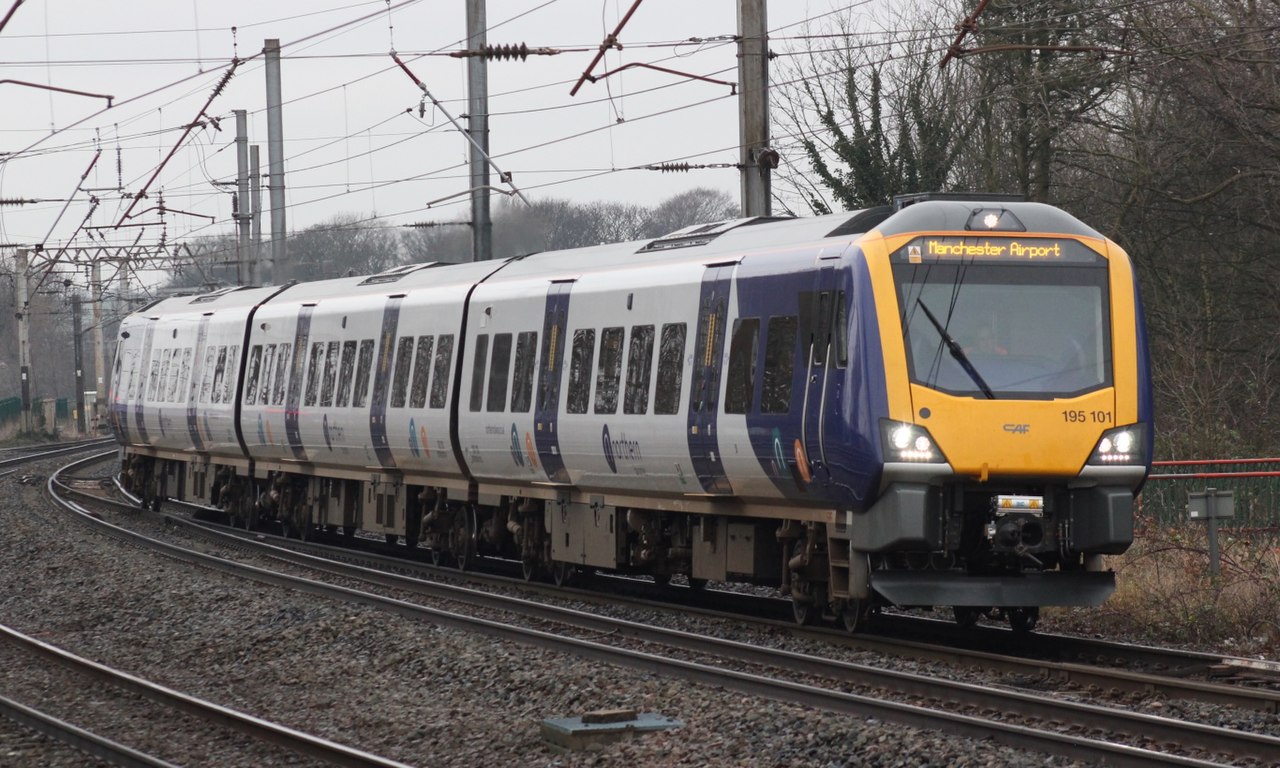
Class 195 Civity DMU
The British Rail Class 195 Civity is a class of diesel multiple-unit passenger train manufactured by CAF for Eversholt Rail Group and currently operated by Northern Trains. A total of 58 units have been built, 25 two-car units and 33 three-car units.The 195 class replaced the old Pacer's which were well known to be bouncy and uncomfortable.
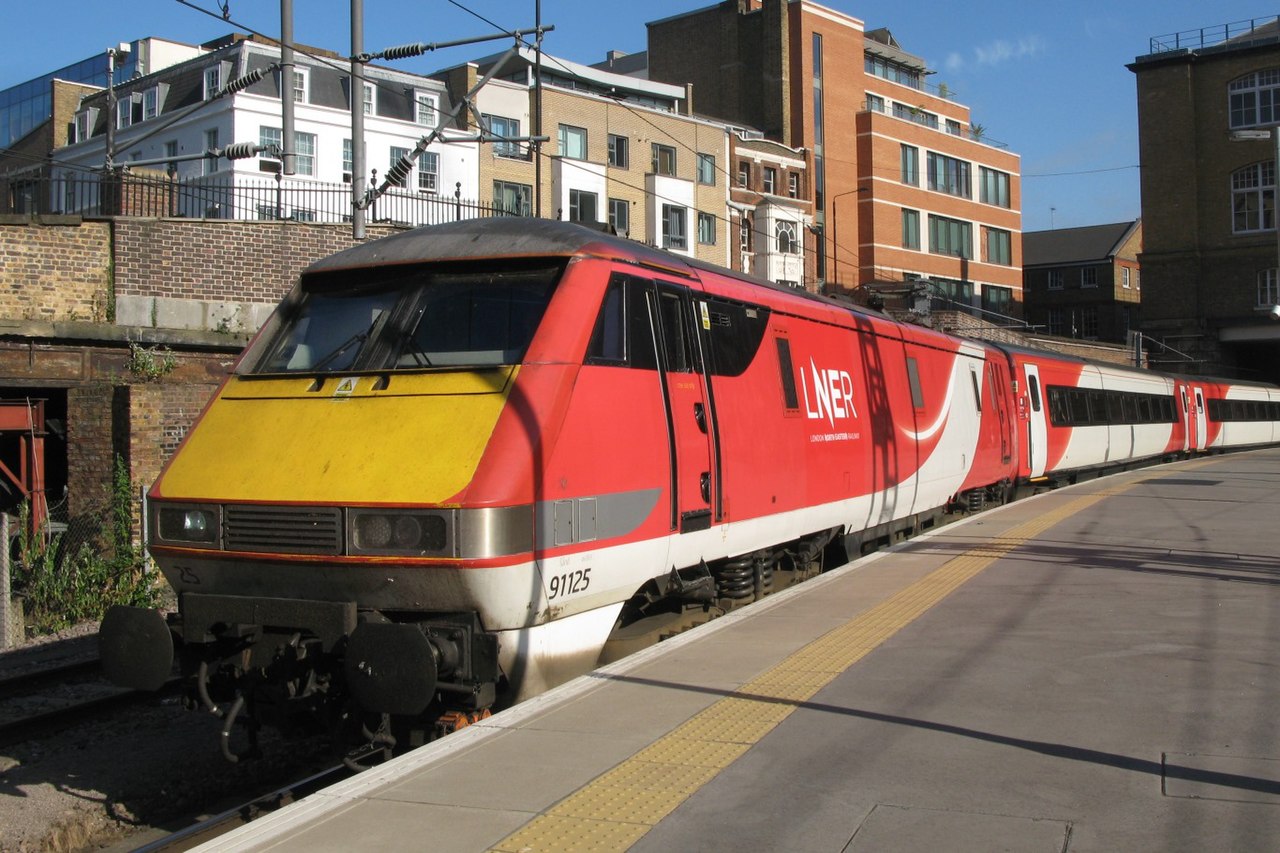
Class 91 InterCity 225 HST
The InterCity 225 is an electric high speed train in the United Kingdom comprising a Class 91 electric locomotive, nine Mark 4 coaches and a Driving Van Trailer (DVT). The Class 91 locomotives were built by British Rail Engineering Limited's Crewe Works as a spin-off from the Advanced Passenger Train project (which was abandoned during the 1980s) whilst the coaches and DVT were constructed by Metro Cammell in Birmingham and Breda (under sub-contract) in Italy, again borrowing heavily from the Advanced Passenger Train. The trains were designed to operate at up to 140 mph (225 km/h) in regular service but are limited to 125 mph (200 km/h) principally due to a lack of cab signalling and the limitations of the current overhead line equipment. They are used on services from London King's Cross to Newark North Gate, Doncaster, Leeds, Bradford Forster Square, Skipton, York, Newcastle, Edinburgh Waverley and Glasgow Central.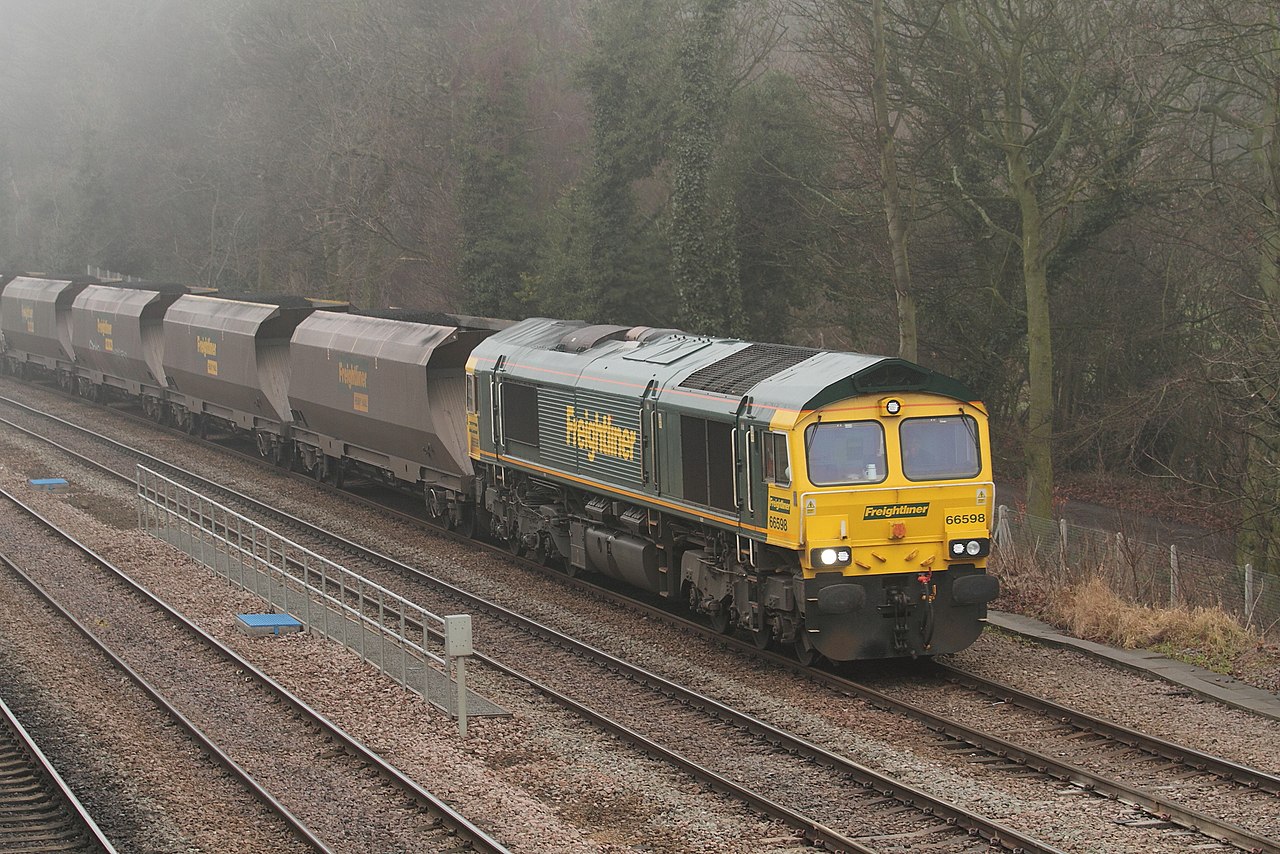
Class 66 (the Sheds)
The Class 66 is a type of six-axle diesel-electric freight locomotive developed in part from the Class 59, for use on the railways of the UK. In Continental Europe it is marketed as the EMD Class 66 (JT42CWR).After the privatisation of British Rail's freight operations in 1996 English Welsh & Scottish (EWS) controlled 93% of UK rail freight.
EWS inherited a fleet of 1,600 mainly diesel locomotives with an average age of over 30 years. EWS needed to reduce operating costs and after reviewing the existing Class 59 EWS approached its builder Electro-Motive Diesel (EMD), then a division of General Motors. EMD offered their JT42CWR model, which had the same loading gauge-passing bodyshell as the Class 59. The engine and traction motors were different models to enable higher speeds, and the Class 66s incorporated General Motors' version of a "self-steering bogie" ("radial truck", in American usage), designed to reduce track wear and increase adhesion on curves.
Placing what was termed as "the biggest British loco order since steam days" EWS placed an order for 250 units in May 1996 to be built at the EMD plant in London, Ontario, Canada at a cost of £375 million. Financed by Locomotion Capital (later Angel Trains), the first locomotives were ready in early 1998; the fastest delivery of an all-new locomotive type by GM.
The EMD 710 12-cylinder diesel engine is a development of a two-stroke engine used for over 20 years, whilst the EM2000 control equipment is the same as that used on Irish Railways IE 201 Class.
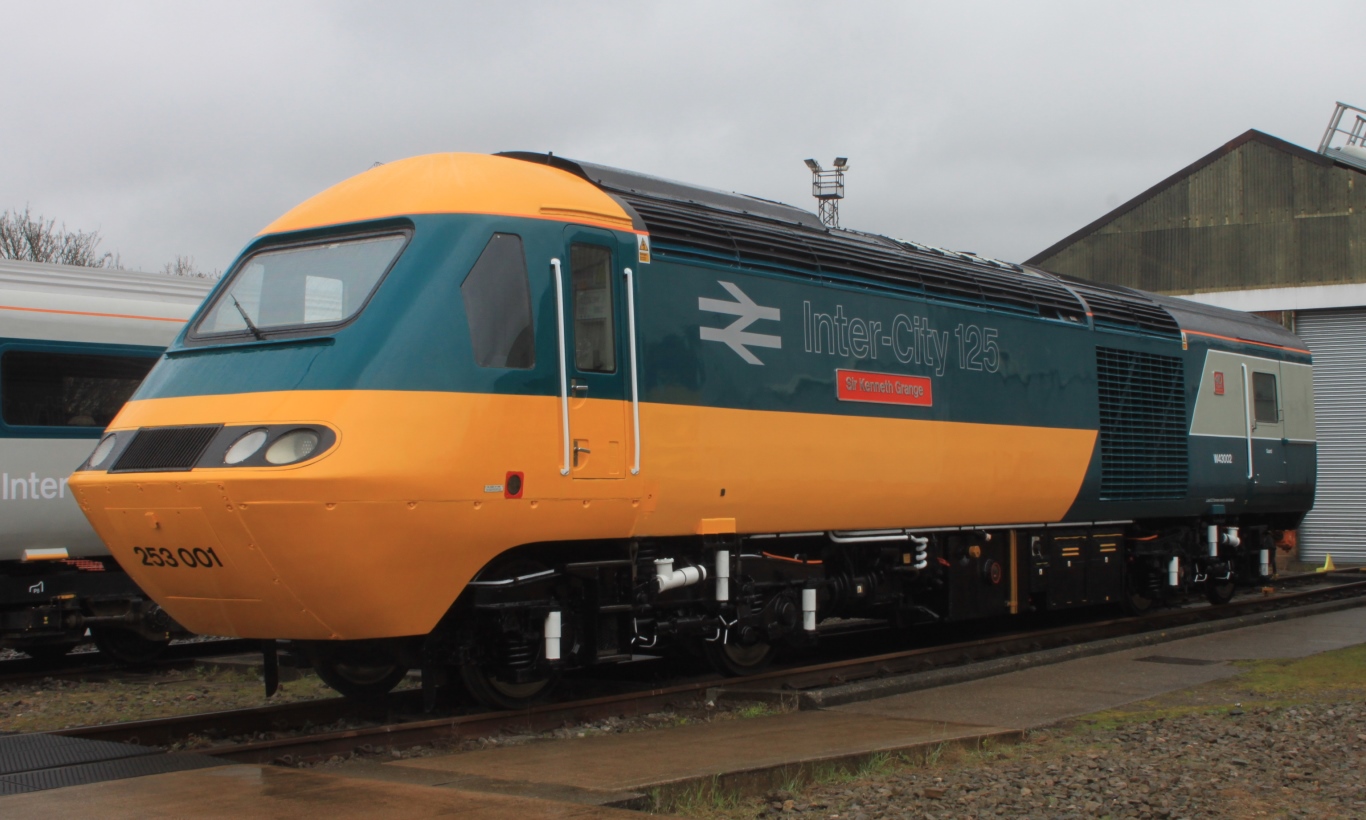
Class 43 InterCity 125 HST
The British Rail Class 43 (HST) is the TOPS classification used for the InterCity 125 High Speed Train (formerly classes 253 and 254) power cars, built by British Rail Engineering Limited from 1975 to 1982, and in service in the UK from 1976 to 2019.The class is officially the fastest diesel locomotive in the world, with an absolute maximum speed of 148 mph (238 km/h), and a regular service speed of 125 mph (201 km/h). The record run was led by 43102 and trailed by 43159.
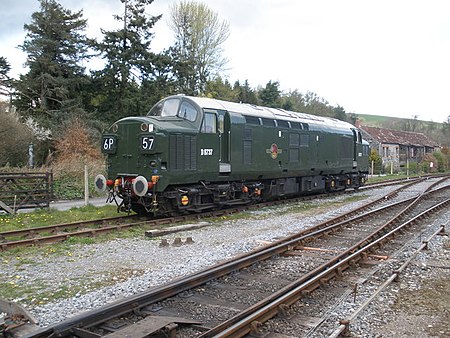
Class 37
The first Class 37 diesel-electric locomotive, D6700, was rolled out of Vulcan Foundry in Newton-le-Willows, Lancashire in December 1960 to begin a working life which was to span nearly 40 years. The newly built "BR green" D6700 entered service in British Rail's Eastern region and was soon seen speeding up and down the tracks of East Anglia, often on express passenger trains where it had displaced steam locomotives.Despite all members of the Class 37 build now being over 50 years old, over 60 locomotives are still mainline registered and remain active undertaking a variety of passenger, freight and departmental duties on the national rail network in 2018.
With the Diesel-Electric loco's the journey time between Liverpool Street station and Wivenhoe was now approx 60mins and this made Wivenhoe a popular location for commuters. This made the town grow rapidly post-war as workers in London moved out of the city into the Essex countryside.
